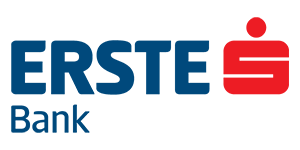Better reporting yields better understanding of risk management
SAS® Visual Analytics helps Erste Bank Croatia tackle diverse data for accurate analysis
Increased regulations have led to more scrutiny for every financial institution. At the same time, a more digital economy is giving these organizations more data to analyze risk. Now, firms have the data – and the mandate – to perform portfolio analysis, monitor trends and examine scenarios in real time.
SAS Visual Analytics made it possible to create and reshape reports that are easily accessible to any employee – even those without technical skills – thanks to intuitive design elements and user-friendly visuals and explorations.
Dejan Donev
Head of Risk Management
Erste Bank Croatia deployed an integrated platform using SAS Visual Analytics to build better reports from larger, more dynamic data sources. The goal of the project was to improve the reports that management receives to analyze risk. Along with this project, it decided to redesign the information management program that serves as the foundation for the reports.
Dejan Donev, Head of Risk Management at Erste Bank Croatia, explains the project.
How has Erste Bank Croatia evolved in its risk management reporting?
Erste Bank Croatia is a member of Erste Group AG and is the second-largest financial services company in Central East Europe, serving more than 820,000 customers. After completing the merger process, the group experienced exponential growth in terms of business and revenue. The volumes of data and transactions dramatically increased as well, so we needed to revise the entire information management system.
Driven by Basel II, we adopted the SAS Risk Management platform with the primary goal of building scorecards in the credit risk department. Today the solution is used by Erste Bank Croatia to handle any type of risk – credit, market, operational and liquidity. In fact, it’s so widely used that credit scoring now represents only 10 percent of activities performed via SAS.
Staff from the Erste Bank Croatia Risk Management division were early adopters of the software. Nearly everyone on my team of 60 people uses SAS daily. But even with the SAS platform in place, the daily reporting process was long and complex. Analytics results were entered in Microsoft Excel via VBA (Visual Basic for Applications) and distributed through email. The files contained thousands of rows of data and were so difficult to understand that we eventually stopped using them.
We needed a better management reporting process, so we implemented SAS Visual Analytics in December 2014, and it has enabled us to get out of the Stone Age of reporting. SAS Visual Analytics made it possible to create and reshape reports that are easily accessible to any employee – even those without technical skills – thanks to intuitive design elements and user-friendly visuals and explorations.
How has a more user-friendly interface helped your organization?
The Risk Management staff members, without any support from the IT team, can perform all the routine operations internally via SAS. While the IT team helps integrate the databases with the SAS platform and other regular maintenance activities, we are completely independent for developing management reports on a daily basis. The software is so intuitive that even those who are familiar just with the basic functions of Excel can work easily with SAS Visual Analytics. The main users of the solution are top and middle management, who really appreciate SAS’ usability features. And because we are more self-sufficient, the IT staff can devote their time to other projects.
What other observations and benefits have you seen from an analysis and reporting perspective?
Like all banks, we keep pursuing our digitization journey. One of the factors in the digital economy means that there will be fewer physical branches and more online services. The market is demanding customized products according to specific individual needs, at competitive prices, of course. Subsequently, the volume of structured and unstructured data is bound to rise, while the business is required to offer immediate answers. With the volume and velocity of data increasing, our Risk Management staff needs daily reports, not monthly reports. It’s impossible to manage all this information and to speed up the decision-making process using Excel as a reporting system. We chose a tool that could give immediate analysis, integrating heterogeneous and multisource data generated by different systems.
What are the challenges for Erste Bank Croatia in the future?
The Risk Management department was the main sponsor for the adoption of the SAS Risk Management platform, while the IT department was initially skeptical. However, because of the exponential growth of data, rethinking the whole data warehouse system is necessary. The IT team is involved in preparing the infrastructure and the applications to support the “new data world,” and the team is also focused on building the correct skills to manage big data.
Increasing the storage capacity is no longer a problem; storage technologies are getting cheaper, and you can use cloud resources. The challenge is to process large amounts of data quickly and reliably, providing real-time analysis and daily reports. The data quantities that previously seemed huge are getting even bigger: 9 million rows of data for the area of liquidity risk management alone. With all data, the data management and business intelligence issues are constantly in the spotlight. I believe – and my colleagues agree – that the SAS platform, and SAS Visual Analytics in particular, will play a more significant role within Erste Bank Croatia’s systems in the future.

Challenge
- Improve management reporting to monitor risk metrics or needs.
- Achieve fast and accurate portfolio analysis.
- Replace an outdated Microsoft Excel-based reporting system.
Solution
Benefits
- Employees without technical skills can build and access reports without involvement from IT.
- The Risk Management team can process large amounts of data quickly and reliably, providing real-time analysis and daily reports, thereby speeding up the decision-making process.
- Erste Bank Croatia is better prepared to manage big data and meet the specific needs of its customers.